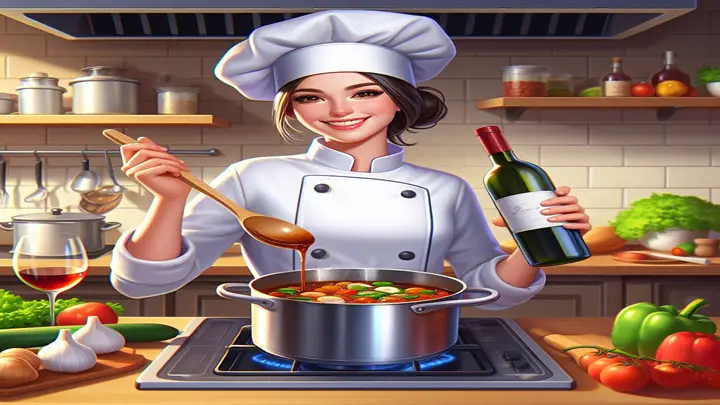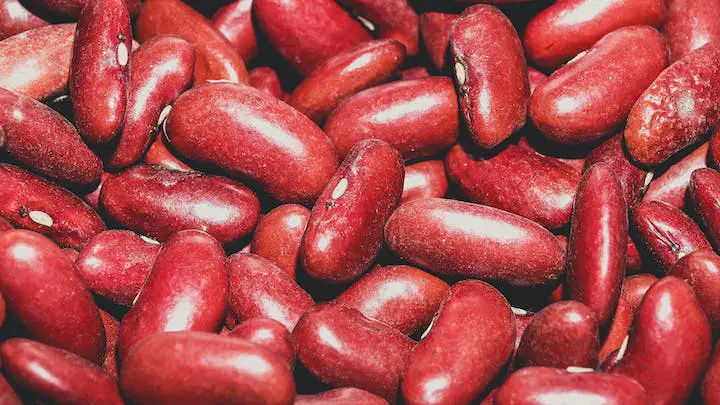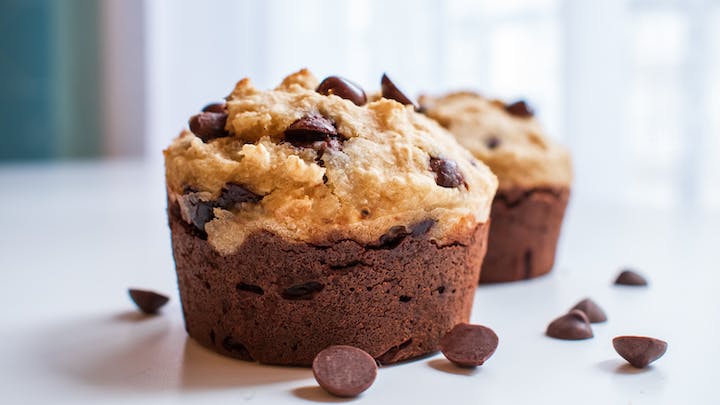In our culinary pursuits, we often seek simple yet transformative ingredients that elevate our dishes from good to great.
Dry white wine for cooking is one such staple, widely celebrated for its versatility.
People really like it because it adds a tangy and versatile flavor to dishes like seafood, chicken, and pork.
Dry white wine presence in the kitchen is not just about adding flavor.
It’s about crafting a unique experience that enhances every bite with nuanced sourness and aromatic depth.
As advocates of quality ingredients, we understand that the choice of wine is crucial.
If you like drinking it, it’s great for cooking too. Avoid those ‘cooking wines’ with extra stuff that can spoil your dish.
As we explore cooking with dry white wine, we’ll focus on how its acidity balances rich sauces and adds a zesty touch, like citrus.
Our exploration will guide you in choosing the right dry white wine to enhance
the flavor of your dishes, whether it be a delicate Pinot Grigio or a robust Sauvignon Blanc.
We’ll share creative ways to incorporate this liquid gold into your cooking repertoire, from marinating to steaming,
and the artistry behind pairing it with meals to create truly memorable moments.
Each swirl of wine in the pan promises to introduce a constellation of flavors to your recipes.
Dry White wine transforms simple dishes into delicious masterpieces, blending acidity, tannins, and aromatics.
Join us on this flavorful voyage where every sip and every dish tells its own story.
The Impact of Acidity in Dry White Wine on Cooking
When we talk about dry white wine for cooking, we’re tapping into a secret weapon that can significantly enhance
the flavor of our dishes.
Here’s how the acidity in dry white wine makes a difference:
Flavor Enhancement:
The acidity in dry white wine acts as a brightening agent in cooking, giving dishes a cleaner and more pronounced taste.
It’s like adding a splash of citrus but with the added complexity of wine’s flavor profile.
This acidity can cut through richer sauces, bringing balance and preventing them from feeling too heavy or cloying on the palate.
Sugar Content Management:
While we might think of dry white wine as not being sweet, it does contain a small amount of residual sugar.
This is crucial in cooking, as it helps to avoid sauces becoming overly sweet, which can happen if a wine with higher sugar content is used.
A dry white wine will contribute a subtle sweetness that enhances, rather than overpowers, the dish.
Aromatic Complexity:
The various aromatics present in dry white wine, such as floral, fruity, or mineral notes, can complement and even enhance the other flavors in your dish.
This is particularly true when the wine is used in recipes with mirepoix or with herbs and spices, as the wine can help to meld these flavors together.
Quality Matters:
It’s important to use a quality dry white wine for cooking, but it doesn’t have to be expensive or the same wine you’d serve at the table.
A mid-range bottle that you enjoy drinking will impart a better flavor to your food than a poor-quality “cooking wine” with added salts and preservatives.
Tannin Consideration:
Unlike red wine, which contains higher levels of tannins that can become bitter when reduced,
dry white wine typically has lower tannin content.
This makes it a safer choice for reducing in sauces without the risk of bitterness, especially when
combined with protein or fat which can help to soften the tannins.
Versatility in Cooking:
Dry white wine is incredibly versatile in the kitchen.
You can use it at the start of cooking to deglaze a pan and capture all the tasty brown bits,
or add it to a marinade to tenderize and flavor meat or fish.
It’s also excellent for steaming mussels or clams, imparting a subtle wine flavor that complements the seafood.
Substitution Tips:
If you don’t have dry white wine on hand, or prefer not to cook with alcohol, there are several substitutes that can offer a similar acidic profile.
Lemon juice or white wine vinegar can provide the necessary tang for dressings or sauces, while white grape juice or chicken or
vegetable stock can add depth of flavor to dishes when deglazing a pan.
By understanding these key points about cooking with dry white wine, we can confidently incorporate it into our culinary repertoire,
knowing that it will bring out the best in our dishes. Whether we’re creating a white wine sauce for orecchiette or using it to poach
apples for a dessert, the acidity, sugar content, and aromatics of dry white wine will help us achieve those memorable moments in our cooking that we all strive for.
Choosing the Right Dry White Wine for Your Dishes
Selecting the ideal dry white wine for cooking can transform your dishes, enhancing flavors and aromas that delight the palate.
Here are some tips to help you choose the right wine for your culinary creations:
High Acidity Wines:
Look for wines with high acidity, such as Pinot Grigio, Pinot Gris, Sauvignon Blanc, Pinot Blanc, and brut dry sparkling wines.
These wines add a desirable sharpness that can balance rich flavors, making them perfect for a variety of dishes.
Avoid Sweet Wines:
It’s essential to steer clear of sweet wines for most savory dishes.
The sweetness can overwhelm the other flavors in the recipe. Instead, opt for dry wines that provide a subtle complexity without excessive sweetness.
Affordable Quality:
When it comes to cooking, you don’t need to break the bank.
A good quality bottle priced between $10-$20 will suffice.
The key is to choose a wine you would enjoy drinking, ensuring that the wine’s quality will elevate your dish.
Wine Varieties for Different Dishes:
Sauvignon Blanc:
Best for dishes that require a citrusy kick, such as creamy sauces or seafood, providing a tang similar to a squeeze of lemon.
Pinot Grigio:
A versatile wine for any recipe, offering a mellow flavor that’s crisp and not too sweet.
Dry Sherry:
Ideal for quick pan sauces and seafood dishes, but avoid cream sherries as they are too sweet.
Dry Vermouth:
Great for risotto and pasta dishes, with a sweet-yet-tart flavor, and can be stored in the fridge for extended use.
Dry Marsala:
A must-have for Chicken Marsala and other dishes, available in both red and white varieties.
Complementary Flavors:
Ensure the flavors and aromas of the wine complement the dominant flavors of your dish.
This harmony between ingredients will result in a more cohesive and delicious final product.
By keeping these points in mind and choosing a wine that suits both your taste and your recipe, you’ll be able to enhance the flavor
and create memorable moments in your cooking. Remember, the wine you cook with should be one you’d happily serve at your table.
For more insights on using wine in cooking, check out this Reddit discussion.
And when in doubt, a crisp Sauvignon Blanc or a neutral Pinot Grigio are popular choices that rarely disappoint.
Creative Ways to Incorporate Dry White Wine in Cooking
Incorporating dry white wine for cooking into our dishes not only enhances flavor but also introduces a unique character to the meal.
Here are some creative ways to use this versatile ingredient:
Deglazing Pans:
When searing meat, a beautiful fond (the brown bits) forms on the bottom of the pan.
Adding dry white wine helps to deglaze the pan, lifting these flavorful bits and incorporating them into a sauce or gravy.
Marinades:
Combine dry white wine with oil and your choice of herbs to create a marinade that imparts subtle acidity and depth to meats or vegetables.
It’s particularly effective for tenderizing and adding flavor to pork and chicken.
Sauces:
Wine can form the base of a savory sauce, such as a classic Beurre Blanc, or be used to add complexity to cream sauces, reducing the need for heavy seasoning.
It works well in balancing out the richness of dishes with a heavy cream base.
Baking:
Surprisingly, dry white wine can contribute to a moist, fluffy texture in baked goods.
It adds a hint of acid and fruit notes that can elevate the taste profile of your recipe.
Poaching and Steaming:
Poaching fish in a wine-infused broth or steaming mussels with a splash of wine adds a subtle wine flavor that complements the delicate nature of seafood.
Refreshing Beverages:
For a twist, use dry white wine to make beverages like Sangria or Wine Popsicles, perfect for a hot summer day.
Replacing Citrus:
In recipes that call for lemon juice, try substituting with wine for a different kind of sourness that also brings the dish’s aromatic qualities to the forefront.
By exploring these methods, you can create white wine dishes that are not just savory recipes but memorable moments at the dining table.
Whether it’s a white wine recipe for orecchiette or a sophisticated sauce for your favorite cut of meat, cooking with dry white wine is
sure to enhance the overall flavor profile of your culinary creations.
Pairing Dry White Wine with Meals
In our quest to create dishes that not only taste delightful but also look appealing, we’ve discovered that the art of pairing dry white wine with meals is an essential skill.
Here’s how to match wines with your dishes to enhance the dining experience:
Pairing with Vegetables:
Roasted vegetables are a staple in many kitchens, and when we’re looking to elevate these dishes, a dry white wine like Sauvignon
Blanc or Pinot Grigio can be the perfect companion.
The crispness of these wines complements the charred, caramelized edges of roasted veggies, bringing a refreshing balance to the palate.
For example, a glass of Sauvignon Blanc with a tray of roasted Brussels sprouts or asparagus can turn a simple side into a gourmet experience.
Seafood Enhancements:
The affinity between fish dishes and dry white wine is well-known.
The light, citrus notes of a wine like Pinot Grigio can complement a delicate white fish or a rich salmon fillet.
A rule of thumb we follow is to pair the weight of the wine with the weight of the dish.
Light fish like tilapia or cod pairs well with a light-bodied wine, while fattier fish like salmon or tuna can stand up to a fuller-bodied
white, such as an oaked Chardonnay.
Rich Dishes and Full-Bodied Wines:
When our menu includes richer, heartier dishes, such as spicy meat casseroles or creamy chicken recipes, we reach for a full-bodied white wine.
An oaked Chardonnay, with its buttery notes and hints of vanilla, can stand alongside these dishes, complementing their richness without being overshadowed.
The creamy texture of the wine mirrors the creaminess in the dish, creating a harmonious blend of flavors.
When cooking with wine, we also consider the transformative effects it has on the food:
Color and Gloss:
As we reduce our wine-based sauces, we’ve noticed the visual transformation in our dishes.
White wine imparts a subtle yellowish-green hue and a glossy sheen, enhancing the visual appeal of the dish.
This is particularly noticeable in lighter sauces or when we use wine as a poaching liquid for fruits like apples, resulting in an elegant presentation.
Contrasting Flavors:
Sometimes, we love to experiment with contrasting flavors.
A dry Riesling with its crisp acidity can be a delightful counterpoint to the heat of spicy Thai food.
The wine’s sweetness tempers the spice, while its acidity refreshes the palate between bites.
Remember, the key to successful pairing is finding a balance between the wine and the food.
Whether we opt for a complementary or contrasting approach, the goal is to enhance the overall flavor of the meal, creating
those memorable moments at the dining table that we all cherish.
Conclusion
Reflecting upon the journey through the culinary potential of dry white wine in cooking, we’ve uncovered that its acidity, aromatic complexity, and ability to enhance flavors make it an indispensable ingredient for the discerning chef.
Incorporating a suitably chosen bottle can transform an ordinary meal into an extraordinary experience, enabling each dish to sing with a symphony of balanced taste and aromatic delight. Whether it’s creating a harmonious white wine sauce or brightening up a marinade, this versatile staple of the kitchen serves as a fundamental tool to elevate your cuisine.
For those inspired to continue exploring the rich tapestry of taste that wine brings to the kitchen, begin your discovery with these thoughtfully-curated wine selections, inviting a bottle of Pinot Grigio or Sauvignon Blanc to become your next ingredient for success.
FAQs
1. What role does dry white wine play in cooking?
Dry white wines such as Chardonnay and Sauvignon Blanc contribute distinct flavor profiles to dishes, depending on their sugar
content. Chardonnay is well-suited for poultry dishes and cream sauces, while Sauvignon Blanc offers a crisp and fruity taste that
enhances the flavors of vegetables.
2. What are the advantages of using white wine in cooking?
Incorporating white wine into recipes can reduce the acidity and add complexity to sauces like classic beurre blanc and Béarnaise. It
also deepens the flavor profile of cream-based sauces and can even be whisked into scrambled eggs or omelets for a more refined
taste.
3. How does wine affect the cooking process?
The acidity in wine helps to keep delicate ingredients such as vegetables and fish tender and moist, particularly in quick-cooking
methods like poaching or steaming. As wine reduces during cooking, its flavor intensifies, adding either a savory or sweet dimension
to the dish. Dry red and white wines are typically chosen for savory recipes.
4. Is there a distinction between cooking wine and wine meant for drinking?
Yes, cooking wine generally has a higher alcohol content, around 16 to 17 percent, to accommodate for the alcohol that evaporates
during cooking. This higher alcohol level means it takes longer to cook off. Cooking wine also contains added salt, preservatives, and
sometimes a sweetener, distinguishing it from the wine you would typically drink.




